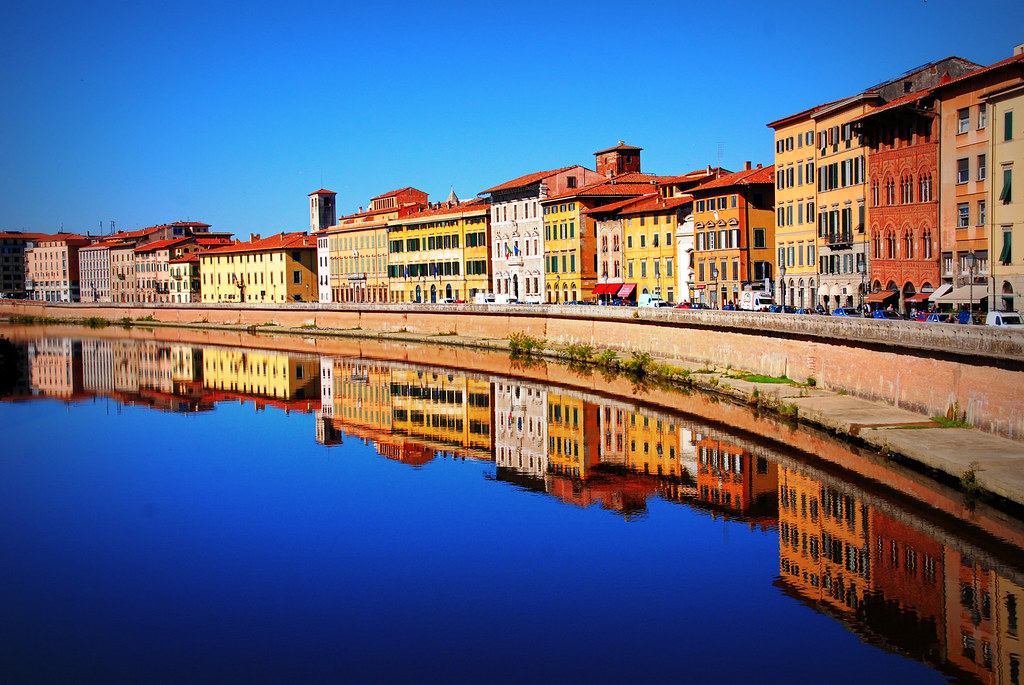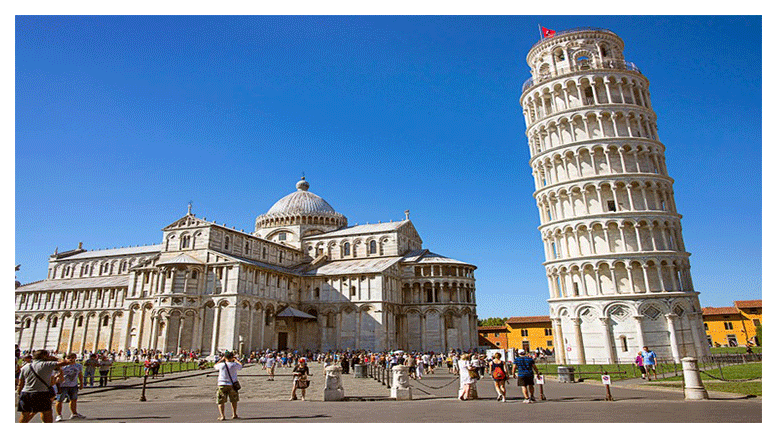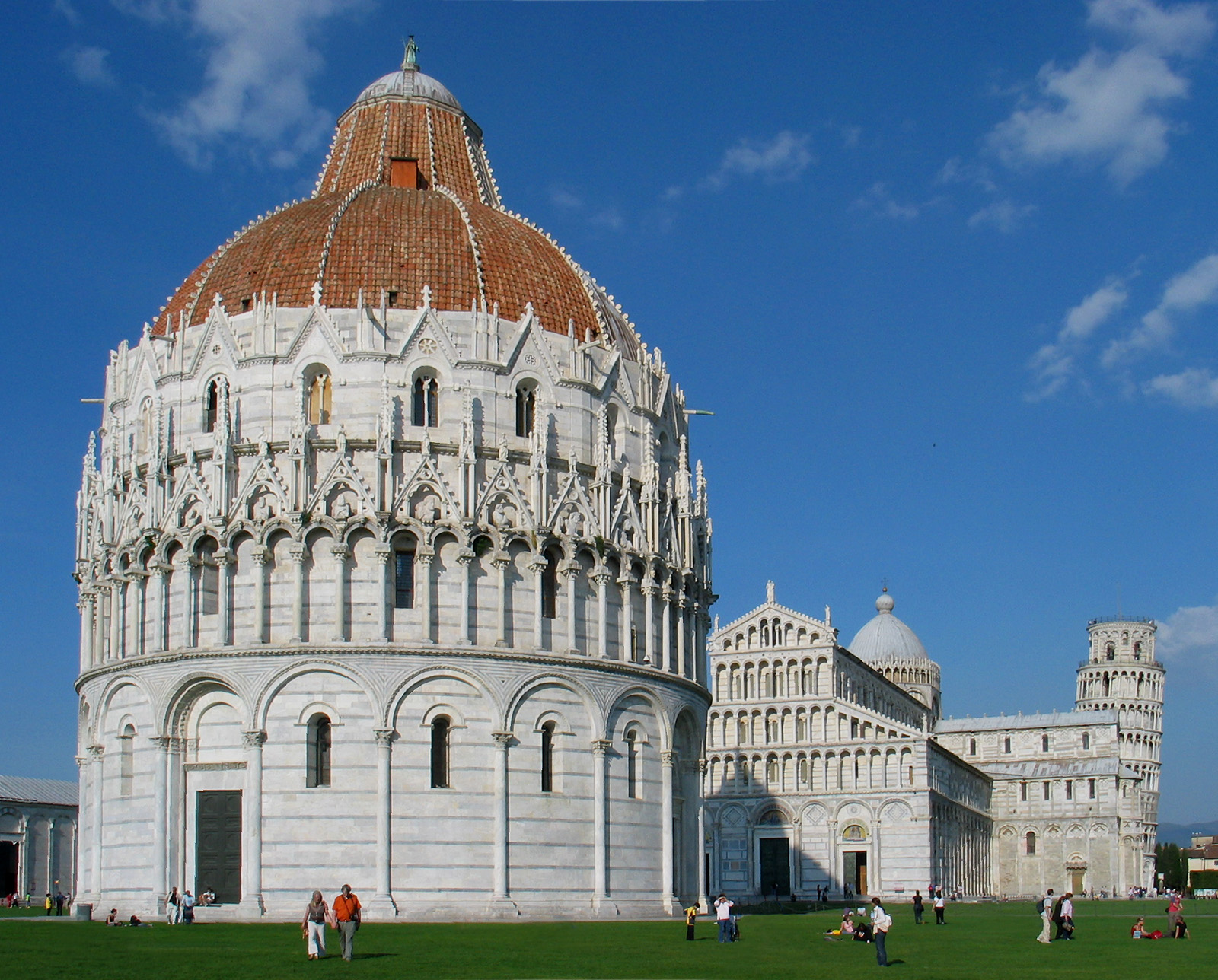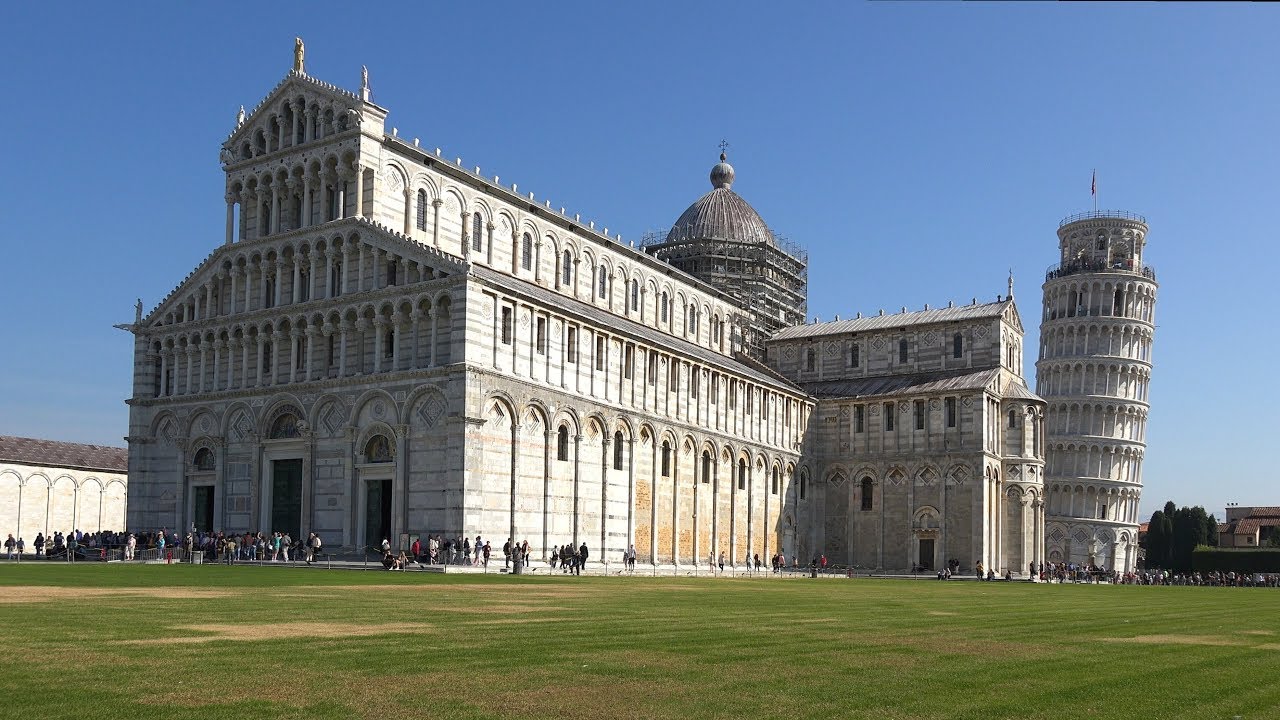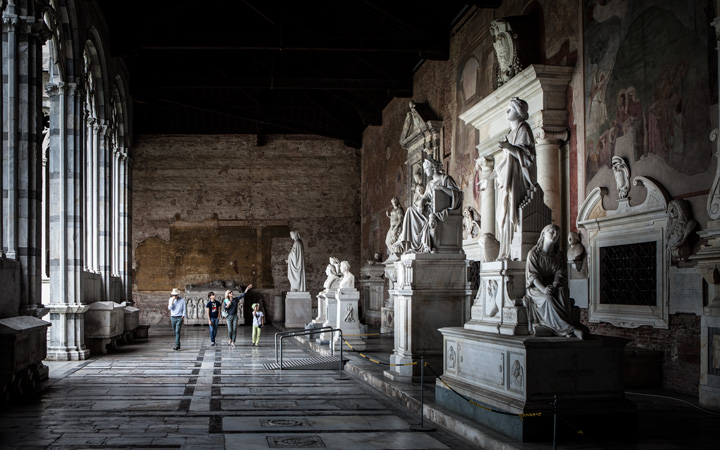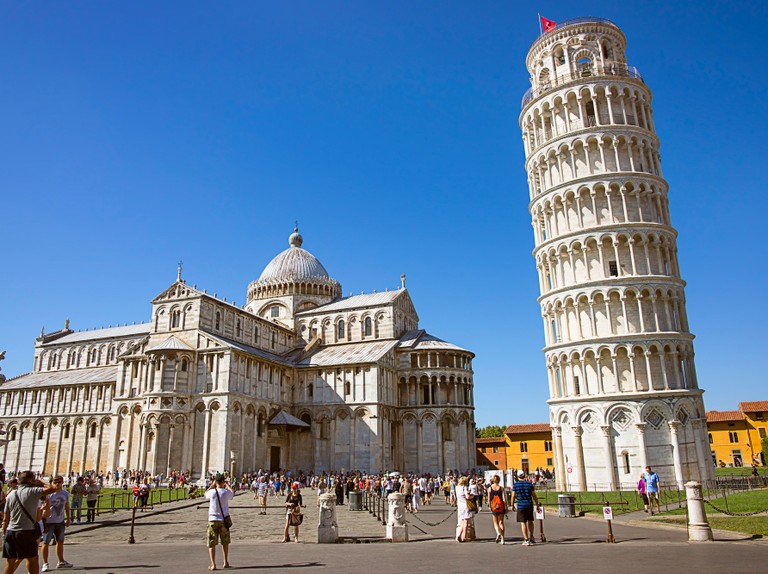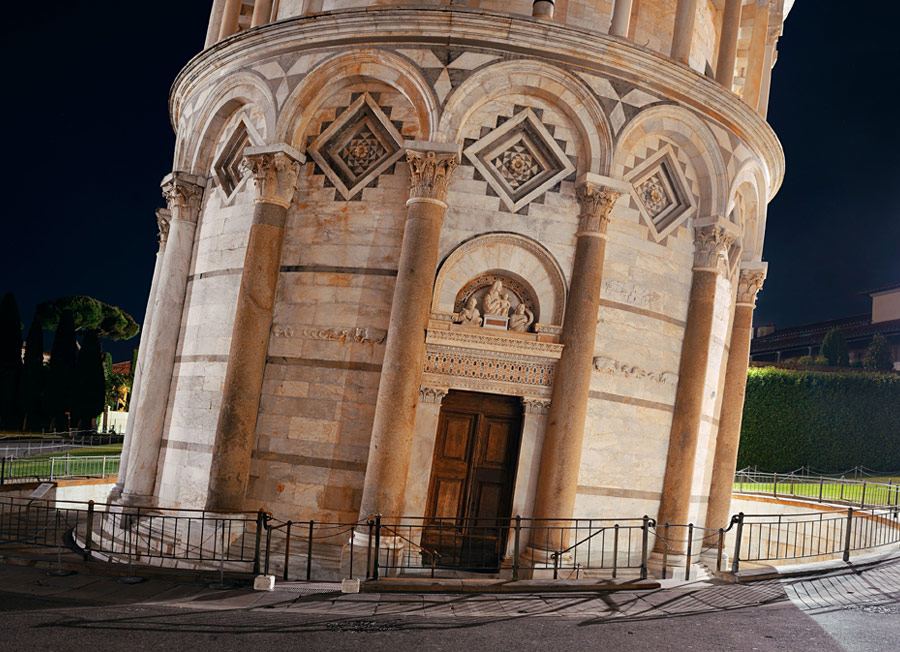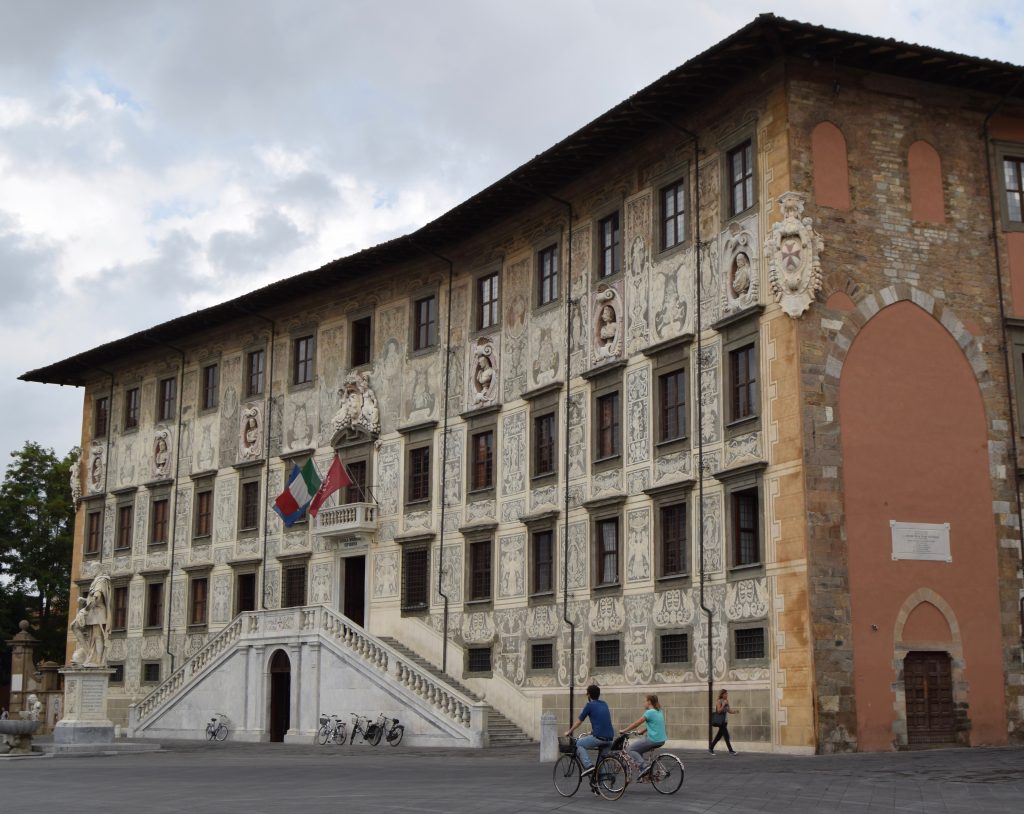Pisa, the Tuscan gem best known for its iconic Leaning Tower, offers much more than a quirky photo opportunity. Located near the point where the Arno River meets the Ligurian Sea, Pisa is steeped in rich history. Originally inhabited by the Ligurians, it became a Roman naval base and was established as a Roman colony in 180 BCE. By 313 CE, it had grown into a Christian bishopric and managed to survive the fall of the Roman Empire, maintaining its role as a major urban centre in Tuscany.
While Pisa often appears on every tourist’s Italy checklist, it’s worth more than a quick stop. Beyond the architectural marvel of the Leaning Tower, the city boasts over 20 historic churches, elegant palaces, and world-class museums. Its riverside setting, just a short drive from Florence, Siena, Lucca, or the Ligurian coast, makes it a convenient and charming destination in the heart of Tuscany.
Places to Visit in Pisa
The historic city is worth much more than a brief stopover and offers a great starting point for exploring Tuscany.
CAMPO DEI MIRACOLI
Recognised as a UNESCO World Heritage Site since 1987, the Campo dei Miracoli — or Field of Miracles — is the heart of Pisa and one of its most iconic landmarks. Originally known as Piazza del Duomo, the name was poetically reimagined by Italian writer Gabriele d’Annunzio in his 1910 novel, where he called it Prato dei Miracoli — “meadow of miracles.” Today, the square retains that poetic spirit in both name and presence.
Historically and symbolically, the three primary monuments in the square reflect the stages of human life — birth, life, and death — a theme rooted in Etruscan belief and preserved in medieval Christian architecture.

Birth is symbolised by the Baptistery of St. John, the largest in Italy. This round, domed structure is my personal favourite, with its lavishly detailed exterior that feels like sculptors went wild in marble. Inside, the circular symmetry, echoing acoustics, and serene upper-level views offer a quiet sense of awe.
Life is embodied by the grand Cathedral of Santa Maria Assunta (Duomo di Pisa), consecrated in 1118. A stunning example of Pisan Romanesque architecture, its striped marble facade leads to a rich interior of golden wood ceilings, detailed mosaics, and Giovanni Pisano’s masterful marble pulpit. It’s a sacred, timeless space.
Death is reflected in the Monumental Cemetery (Campo Santo), a peaceful cloister with sun-drenched arcades, ancient frescoes, and lush green lawns. The stillness and play of light here create a contemplative, almost spiritual atmosphere.
And then, of course, there’s the Leaning Tower of Pisa — the world’s most famous bell tower. Built in the 12th century, it began to tilt soon after construction due to unstable soil. Today, it’s six tiers of stone arches and a unique lean that make it an architectural wonder. Climb to the top for a surreal, slanted view of Pisa that’s truly unforgettable.
PALAZZO DEI CAVALIERI
The city’s main attraction is Palazzo dei Cavalieri, constructed in the 16th century and originally serving as the headquarters of the Knights of Saint Stephen. The second most important square in Pisa, Knights Square, is commonly referred to as the Palazzo Della Carovana. Today, it is an education centre and houses the Scuola Normale di Pisa, a higher learning institution within the University. The front façade of this palace is magnificent and features some spectacular decoration on the stonework. There is also a large central staircase leading up to the main doors and a series of stone statues representing the Dukes of Tuscany.
MUSEO NAZIONALE DI SAN MATTEO
The National Museum of San Matteo is the most prized attraction of the city and features some stunning artefacts and sculptures. If you are considering learning a little about the history of this fine city, this museum is the place to visit. Notable objects include original works of sculpture from the Cathedral of Santa Maria Assunta and the Baptistery, and some exquisite paintings from the 12th and 13th centuries.
If you choose to visit a museum during your stay in Pisa, make sure it is this one!
BORGO STRETTO
Borgo Stretto is one of the main shopping drags in Pisa, offering stores for everything from commercial high-street brands to luxury labels. It unfolds between the lovely old buildings where the lanes to either side open to little squares and courtyards, plus plenty of small cafes and restaurants. Try not just to shop but stroll, and veer off to the sides occasionally as you see.
What else? Eat cecina! The lean gluten-free bread with chickpea flour, water, oil, salt, and black pepper. You can eat the cecina alone or in a schiacciatina, a flatbread. A real treat you must try!
THE ARNO IN PISA
While you’re finishing up your sightseeing, you might want to stroll alongside the River Arno, one of Italy’s main rivers. Pisa also sits around the waterway. This river stretches for 241 km and has its source at Mount Falterona. In central Pisa, five beautiful bridges span the Arno. The Lungarno Mediceo and Galileo Galilei run parallel to the river. The houses and architecture create a gorgeous backdrop for photographs in this part of Pisa.
A walk along the Arno through Pisa provides a breathtaking view and a memorable experience.
